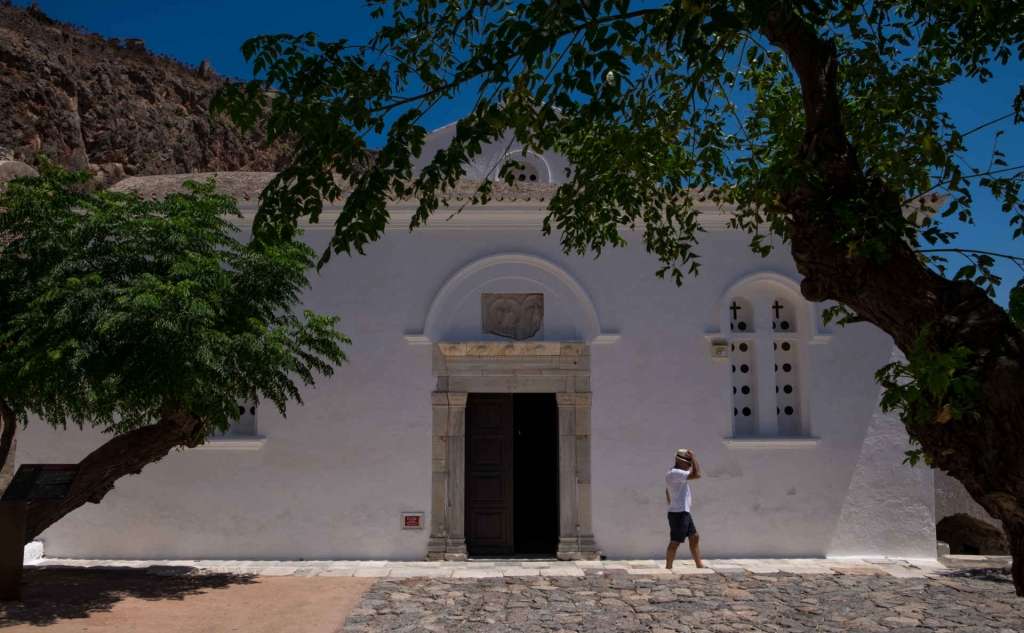The Church of Elkomenos Christ
The church of Elkomenos Christ dominates the area of the square in the Lower Town of Monemvasia and is considered the oldest on the rock. It is a three-aisled basilica with a dome, three semicircular arches to the east and a vaulted narthex to the west. The architectural form that the temple has today is the result of renovations of various periods. Its initial construction phase probably dates back to the Older-Christian times (6th-7th century) when the city’s first inhabitants settled. The chapel of Agios Ioannis, which is built on the south side of the church, dates back to the 11th-12th century. In 1697, according to the inscription above the entrance, the outer narthex, the chapel and the dome were added approximately in the middle of the building. The temple was destroyed in 1770 by the Turkalbanian raid and was repaired several more times.
The temple was stripped of portable icons and relics many times. Emperor Isaac II Angelos (1185-1195) removed the icon of the Coming Christ and moved it to the chapel of Archangel Michael in Sthenia, Constantinople. Also, the icon of the Crucifixion (second half of the 14th century) after its theft by antiquarians in 1979, and its exhibition for many years in the Byzantine and Christian Museum of Athens, returned to the Elkomenos Christ Church in 2011. Unfortunately, the antiquarians caused severe damage to the icon by removing the canvas with the hagiography and then dismembering it. The difficult task of restoring the image was undertaken by the best hagiographers of the time. They succeeded in regluing the dismembered parts of the iconostasis and then placed the canvas with the iconography of Elkomenos. The icon of Elkomenos is considered one of the most significant and most beautiful of the so-called "Palaeologian Renaissance", an invaluable ecclesiastical relic.
The church’s interior is decorated with post-Byzantine icons (17th-18th century) such as the Elkomenos Christ, Saint John the Forerunner, the Nativity of Christ on the iconostasis etc. The marble sculptures date back to the Early Christian and Byzantine times. Also, the current marble iconostasis, which replaced an older wooden sculpture that is currently in the church of Panagia Myrtidiotissa, was made in 1901 by Georgios Kaparias, the Tinian marble sculptor.
Today, the church of Elkomenos Christ operates as a metropolitan church and celebrates on Thursday before Easter, while the icon's return to Monemvasia is celebrated on May 23rd.





